Search Results for Tag: Emissions
Arctic infrastructure cannot keep pace
The Russian response to Greenpeace’s protest at the Arctic Prirazlomnoye oil rig made it clear to a lot of people that in spite of environmental concerns, the commercialization of the region is proceeding “full speed ahead”and enjoying top political priority. The controversial rig went into production at the end of the last year. Shipping has also increased dramatically in Arctic waters in the last few years, with international freight companies using the Northern Sea Route along the Russian coast to transport gas and other commodities. This reduces the distance between Shanghai and Hamburg by around 6,400 kilometers, compared with the usual route via the Suez Canal. Tourism is also on the up, with an increasing number of cruise ships making their way through Arctic waters during the summer months. What happens if one of these ships sinks? When the Costa Concordia cruise ship hit rocks off the italian island of Giglio in January 2012 and tipped onto its side, the risks of this kind of tourism became graphically clear. The thought of something like that happening with an iceberg in the remote regions around Spitsbergen or Greenland doesn’t bear thinking about. But that, of course, is exactly what we have to do with a view to minimising risks for people and the environment.
The Arctic Institute Center for Circumpolar Security Studies has examined existing infrastructure in the six Arctic coastal states (USA, Canada, Greenland/Denmark, Iceland, Norway and Russia). I attended a workshop as a side-event to the Arctic Frontiers conference in Tromso in January, where the initial results were presented. They should really set the alarm bells ringing.
Kathrin Keil from the IASS Institute for Advanced Sustainability Studies in Potsdam, Germany, looked at developments in the oil and gas sector. She warned that the unpredictability and variability of weather and ice conditions would severely limit the options for responding to an oil accident in the region. The ice cover in May can be between 30 and 90 percent, she explained.
The ice-free period can be as short as one month or as long as nine. To date, there is no adequate technology available to successfully deal with the results of an oil spill in Arctic waters. The Institute also says the ‘Oil Spill Response Plan’ provided by Gazprom for the Prirazlomnoye rig lacks detail. The rig is located close to several nature reserves and Kail warns that these areas would be extremely vulnerable if oil or fuel were to spill. She argues for the tightest possible safety regulations, given that this is the first offshore oil platform to go into operation in the Arctic.
Not enough icebreakers
The existing infrastructure is also inadequate for the increase in Arctic shipping, says Malte Humpert, Executive Director of the Arctic Institute. He says the icebreaker fleet is not big enough to support the growing number of vessels sailing through Arctic regions.
The increase in the number of cruise boats, especially near the Norwegian Spitsbergen archipelago and off the west coast of Greenland, is another cause for concern. If a cruise ship carrying 3,000 people were to collide with an iceberg near the popular tourist town Ilulissat, the existing search and rescue capacity would not be sufficient to cope. The available planes, helicopters and ships would be too few and take too long to reach the accident site, says Arctic Institute’s Marc Jacobsen.
With just 4,500 residents, Ilulissat would be unable to provide adequate medical treatment or shelter for people affected by the crash. Oil and other toxic chemicals dumped by the damaged vessel would be very difficult to clean-up. There is also a shortage of satellite, internet and mobile phone connections, meaning communication would be limited.
Politicians are prepared to take risks
The risks of the increasing commercialization of the Arctic are high on the priority of the region’s politicians, says Magnus Johannesson, Director of the Permanent Secretariat of the Arctic Council . In an interview at his office in Tromsø he stressed to me the importance of ongoing negotiations aimed at introducing a ‘Polar Code’ to regulate Arctic shipping. It is set to come into effect in 2016. Johannesson also referred to the SAREX exercises conducted in 2013. These simulated a shipping accident to test search and rescue capacity. But Marc Jacobsen from the Arctic Institute says the exercise was too small in scale to provide a realistic picture of readiness. There were only 250 people on the vessel used in the mock accident.
“I think everyone is aware that there could be better infrastructure, but these are the first steps,” Johannesson told me . “The Arctic states are very aware of that and doing their best to speed this up”.
Disaster in the Arctic: a possibility
Anton Vasiliev, Russia’s ambassador to the Arctic Council, assumes his country will have proper infrastructure in place along the Northern Sea Route within the next few years. Iceland’s Foreign Minister Gunnar Bragi Sveinsson also told me in an interview in Tromso he was confident that security and response infrastructure would be improved.
“In the end we are always worried about the ocean around Iceland, so the environment and security matter. The possibility of a disaster in the Arctic is why we are paying so much attention to the region,” he told me. “The attention to the economic potential of the Arctic is growing fast. But I don’t think it is moving so fast that we cannot manage it.”
But environmental groups are increasingly concerned about commerical activity in the Arctic. I noticed a distinct lack of ngo participation at the Arctic Frontiers event this year. The price of conference attendance seeems to be one factor that reduces the number of ngo people attending. On the official programme, it seems only one ngo is officially invited to speak each year. This year, it was WWF’s turn, and Nina Jensen the CEO was on one of the panels. I interviewed her in Tromso and she told me: “With the increasing ship traffic, there is a higher risk of accidents and pollution that will impact both humans and wildlife to a very serious extent. We do not know enough about the marine environment to be able to avoid serious impacts. We do not have adequate regulations in place, and there is no sufficient oil spill preparedness.” While she welcomes the Polar Code, she stresses it is only a first step, and fails to tackle issues such as black carbon pollution, invasive species and the use of heavy fuel oil.
She sees a huge discrepancy between the political rhetoric, with politicians all paying lip service to the need for a better infrastructure to protect the fragile Arctic environment, but taking little action to make this happen in time.
We also talked about the huge paradox that is Arctic oil drilling. Climate change is making it possible – and burning oil, in turn, is creating the emissions which cause climate change. The world needs to get away from fossil fuel, says Jensen. The future of the Arctic has to be renewable.
My article on this is on the DW website: Are we prepared for a catastrophe in the Arctic?
Oil, Industry and Arctic Sustainability
I arrived at the university campus for Arctic Frontiers this morning to find a row of young people waiting to welcome the Norwegian Prime Minister Erna Solberg with a banner protesting against fossil fuel drilling in the Arctic. Ingrid Skjoldvaer, the deputy leader of Norway’s biggest youth environment organisation told me they want the prime minister to stop Arctic drilling in Norwegian seas and be serious about cutting emissions and taking their climate goals seriously. She knows it brings in a lot of revenue, but says we need to start a transition now for a future with renewables. WWF’s Nina Jensen told me she thinks there is a growing awareness in Norway of the link between fossil fuel emissions and the climate change that is affecting the Arctic so dramatically.
No future without Arctic oil?
In her address to the conference, PM Solberg was clear about the continuing importance of oil and gas drilling for Norway. In a speech focussing on the goal of making northern Norway an “innovative and stable region” and an “attractive place to live” through sustainable development, it became clear that fossil fuel extraction is an integral part of her policy to give people living in the region employment, education, improved infrastructure and maritime safety. At the same time, she stresses, this domestic policy priority is in line with growing international interest in the Arctic.
There was acknowledgement of the problems caused by climate change. But the young people outside will have been disappointed if they hoped for any signs of a shift in fossil fuel policy (not likely in this context or in general with agreement across the parties that Arctic development is key, it seems). WWF’s Nina Jensen told me afterwards she had not expected much else, but was pleased that climate change had at least been mentioned repeatedly in the speech.
The PM stressed the government’s investment in research and development as part of the “need to seize new opportunities and meet new challenges in a rapidly changing Arctic.” The main challenge facing the High North is the lack of qualified labour, she said, stressing also that oil and gas are important areas for future developments. Clearly, the country, whose wealth is based on revenue from oil in the past, is going full speed ahead for Arctic development. Sustainability? Always mentioned, but there still seems to be no answer to the question of how drilling for Arctic oil and continuing climate-changing emissions from fossil fuels can be sustainable.
Greenland, the “ice island”
Imagine a giant island with 3 climate zones, being pushed almost 2km northwards each year. That statistic was quoted by Greenland’s premier Alequa Hammond in her speech. It illustrates graphically the huge changes facing the environment and people of the world’s biggest island with the ice sheet that contains the biggest amount of water in the northern hemisphere and is of key importance to the world climate and global sea levels.
I had awaited the speech by Greenland’s premier Alequa Hammond with interest and was not disappointed. She started by saying she was going to talk not primarily about oil, gas and mining as most might expect, but health and the environment. (Not that the two are unconnected). In her talk, she brought home the effects of climate change on the traditional lifestyles of indigenous Greenlanders in what seemed to me an authentic and sincere way. As well as the melting ice problem, she talked of the contaminants polluting the environment and finding their way into Arctic mammals. Whether you just love them as part of our biodiversity for the sake of it or want them for your food supply, pollution from industrial activity far, far away, is endangering animal life up here.
Hammond is a realist. She knows her small country needs revenue to achieve the goal of full independence from Denmark. But she is also well aware of the negative impacts of rapid industrialisation on a people traditionally very close to nature. While physical health has been improved by better housing, nutrition and health care in the last 50 years, Hammond stresses the negative mental and physical health effects of a loss of traditional values. She mentioned the above-average suicide rates in northern circumpolar areas. Then there are chronic illnesses and heart disease brought on by a shift from hunting and fishing to “office-worker lifestyle”. Urbanisation is another factor, with 80% of the 15.000 Greenlanders living in the capital Nuuk and only 20% in villages, whereas just 100 years ago everyone lived in small settlements.
Hammond identifies the dilemma: How to bring Greenland the prosperity it needs using easier access to oil, gas and minerals, made more accessible through climate change, without destroying a society rapidly being catapulted from a traditional nature-based rural lifestyle into the realities of the industrialised, commercialised, globalised world where the environment has at best secondary priority?
She talked a lot about the special relation with Denmark, the former colonial power. For her it is clear that Greenlanders have the right to complete self-determination – without losing that close relationship.
There was just one thing that I did not find adequately addressed in Hammond’s presentation. She made a clear case for the need for environment protection. We need to do more on maritime safety, oil spill preparedness, cost-effective surveillance solutions to detect oil spills, search and rescue. But when she proudly refers to her government’s controversial decision to abandon the country’s zero-tolerance policy of mining uranium and other minerals with radioactive content, I find it hard to see how this fits.
Another clear message was that outsiders should not interfere. While Hammond said she approved of the decision to have non-Arctic speakers at Arctic Frontiers (and at a time when the secretariat of the Arctic Council here in Tromso is holding a high-level closed doors meeting discussing the role of the many observers to the body), she said “It is clear for me that development in the Arctic should be given by the needs and inspirations of the people of the Arctic. Anything else would be wrong.” At the same time she appealed to any new partners in the Arctic to bear in mind that even small changes will have a big effect on a small indigenous population. Perhaps this reflects the realistic knowledge that developing the Arctic will not be possible without the economic power and the expertise of outsiders. Fine food for thought on this final day of the political part of a conference on “Humans in the Arctic”.
Updates on Twitter @iceblogger
Why conferences like Warsaw won’t save the Arctic!
No wonder the ngos walked out in disgust. The latest UN climate conference has strengthened my feeling that these mega-events are not going to lead to the emissions reductions we need to protect the polar ice and the world climate.
Typhoon Haiyan and its devasting effects on the Philippines was a fine warning of what the world could be facing if we are not able to put the brakes on climate change. The newest IPCC report provides impressive evidence of the need for swift and effective action to combat climate change. Otherwise, the world will have to cope with more frequent and severe extreme weather events, rising seas, floods and droughts. The World Bank and the UN have set the alarm bells ringing. We have to reduce emissions by around 85% by 2050 to keep global temperature rise to the two-degree Celsius limit. The International Energy Agency says that would mean leaving 80% of our remaining fossil fuels in the ground.
Climate sinners hosting
Unfortunately the track laid out for the conference in Poland was heading in another direction from the start. Fossil energy providers and huge energy consumers like the steel and car industry were sponsoring the event. The host country Poland is and plans to remain a coal country. So far, Warsaw has blocked more ambitious emissions targets in the EU. The fact that a coal summit was held in Poland during the climate negotiations was clearly demonstrative – and verges on the cynical. The sacking of the Polish environment minister who was chairing the talks shows a lack of respect for the meeting and the issue of climate change itself.
Climate politics: no leadership in sight
But the failure of the conference was not just Poland’s fault. CO2 emissions are continuing to rise globally, and the conference delegates did not have much in their luggage to do anything about it. It was far too little in the way of commitment to binding emissions reductions or to creating an effective and well-funded compensation mechanism for developing countries. The poorest countries, which are already struggling to cope with unpredictable climate patterns, droughts and flooding, went home disappointed and frustrated – once again.
The EU was unable to agree on tighter emissions targets ahead of the conference. Germany, long considered a leader in the field, is currently putting the brakes on its own renewable energy revolution by shifting financial incentives. Japan, Canada and Australia, all took a step backwards. And in spite of some progress at home, the major emitters China and the USA were unlikely to make any substantial announcements.
No progress on a new climate agreement
The Warsaw conference was supposed to come up with an effective timetable to lead to a new international climate agreement, scheduled to be set up in 2015 and implemented in 2020. Instead, it seems countries are playing for time and putting off any binding commitments. The vague document agreed at the very last minute contains no firm deadline for emissions pledges – which will not be binding anyway. The window of opportunity is rapidly closing. Decades of negotiations have produced little in the way of results. Every year without a decrease in greenhouse gas emissions reduces the prospect of keeping to the “two degree” target. Existing pledges fall way short of what is required. The “business as usual” trajectory is heading for a temperature rise of at least four degrees Celsius.
Once more, the UN climate conference has shown its inability to protect the world from the dangers of rapidly progressing climate change. Aside from the annual mega-meetings, which are in danger of disintegrating into mere token events, there are still signs of hope. China, for instance, is making considerable progress on energy issues, although the country refuses to accept internationally binding targets. Climate protection has to become part of daily politics and business in industrialised and emerging countries. Politicians must be prepared to abandon short-term advantages in favour of a long-term perspective, which would guarantee the future for coming generations through a sustainable low-carbon economy. The means turning away from oil and coal, developing renewable energies, ensuring a high price for carbon and providing adequate finance to protect developing nations from climate change caused by past emissions of the industrialised world.
“On Thin Ice” at Warsaw climate talks
Did you know it was the “Day of the Cryosphere” at the Warsaw climate talks COP 19 in Warsaw yesterday? If not, you might be forgiven. I haven’t seen it making the headlines in the mainstream media. That is a pity, given that what climate change is doing to our ice, snow and permafrost has repercussions for the whole planet.
![]() read more
read more
“Poles apart” on the Arctic?
Intrigued by a tweet from the British Guardian, “Arctic melt means more pirate chases, say Polish climate hosts”, I clicked on to the website of the organisers of this year’s UN climate talks, to be held in the Polish capital Warsaw next month. Alas, the blog where the offending entry had been posted has been temporarily closed, leaving only this message:
“For the time being we decided to take some time away from our blog. Our idea was to focus attention on important issues that need good solutions and spark discussions on those. We did not foresee that some readers would take the presented texts literally as the official Polish position. Notwithstanding we would like to express regret as some of you found the text to be inappropriate. We acknowledge these criticisms. It was certainly not our aim to offend anybody. We will take due care that all new articles and posts on this website are written in a clear and sensitive manner so as to avoid misunderstandings. Stay tuned for more ideas.”
Unbelievable. The people responsible for the COP19 website have not felt obliged to write carefully up to now? People have been able to put their own “non-official” views on there? Well, the aim of “sparking discussions” has certainly been achieved, if not in the way the conference organisers intended. I will have to refer you to the Guardian if your curiosity is aroused as to what was actually on the blog before it was closed. Let it suffice here to quote the possibility mentioned there of “chasing the pirates, terrorists and ecologists that will come to hang around…” in the developing Arctic. No wonder Greenpeace and WWF amongst others called for the post to be removed. “Pirates, terrorists and ecologists”?
Poland’s hosting of the conference is in itself controversial, given that the country receives almost all its electricity from coal. The conference partners listed on the website include PGE, the Polish Energy Group which runs several coal power plants in the country, including the largest coal-fuelled thermal power plant in Europe, Belchatow.
Poland, you will have to smarten up your act and drastically improve your communications in the run-up to a key conference that should pave the way for emissions reductions in the interest of the Arctic and the rest of the planet. Assuming you are taking this issue seriously?



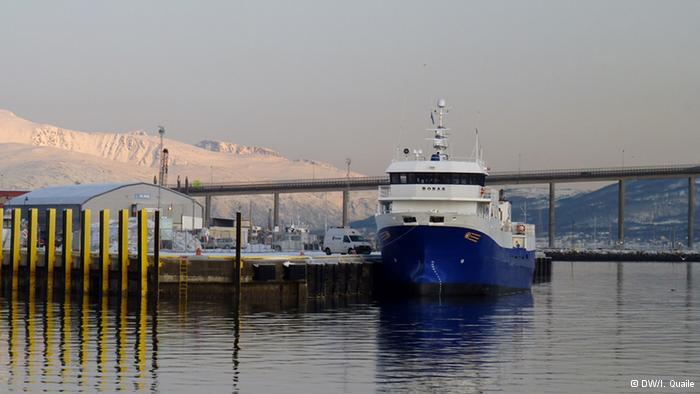
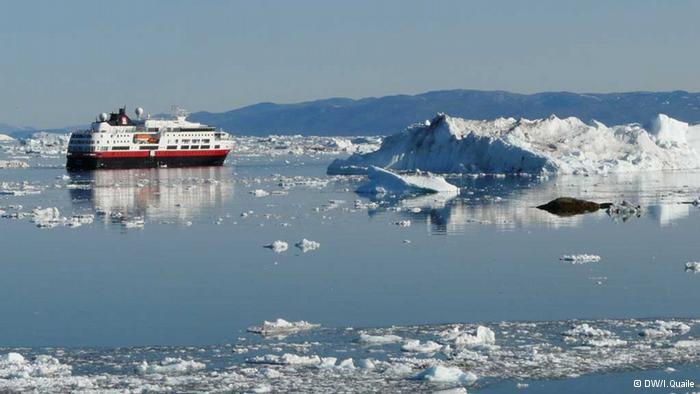

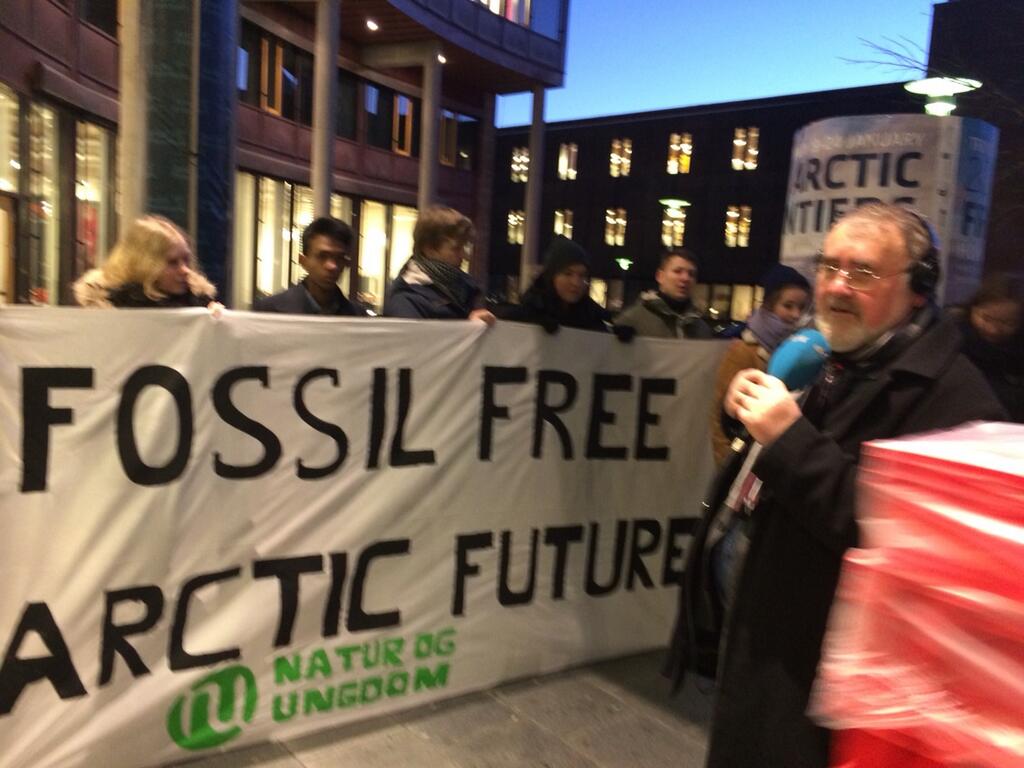
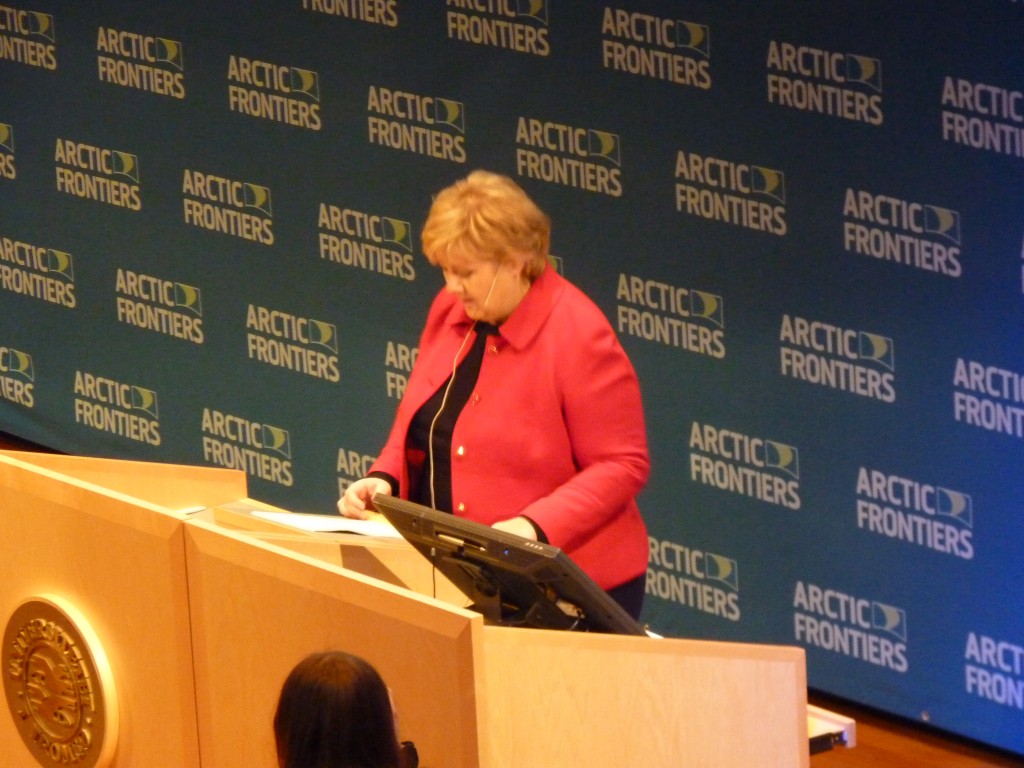

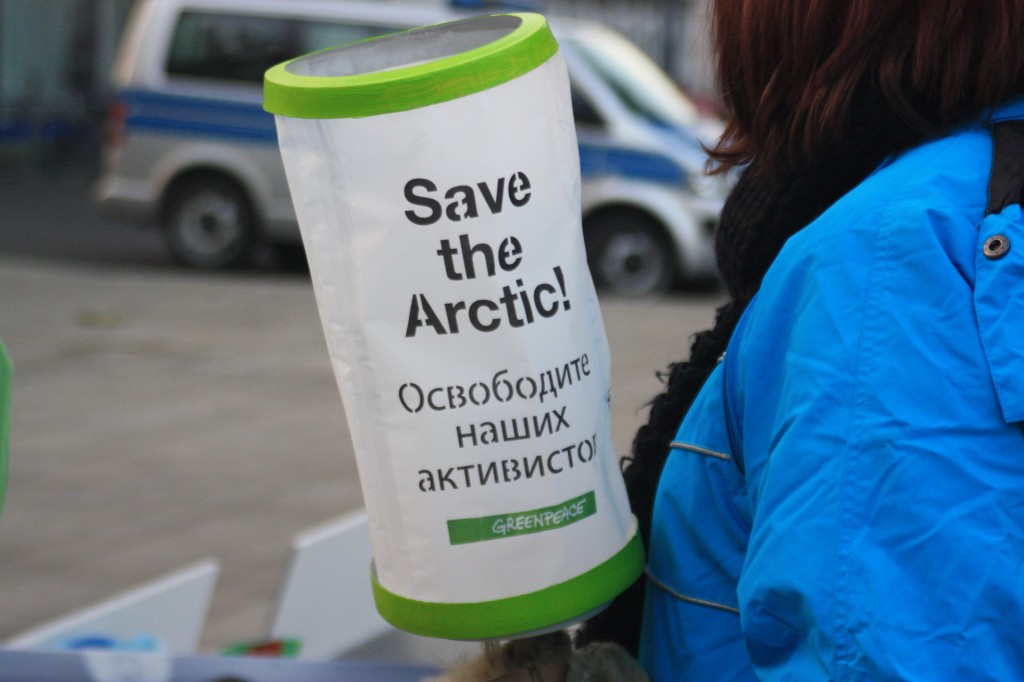

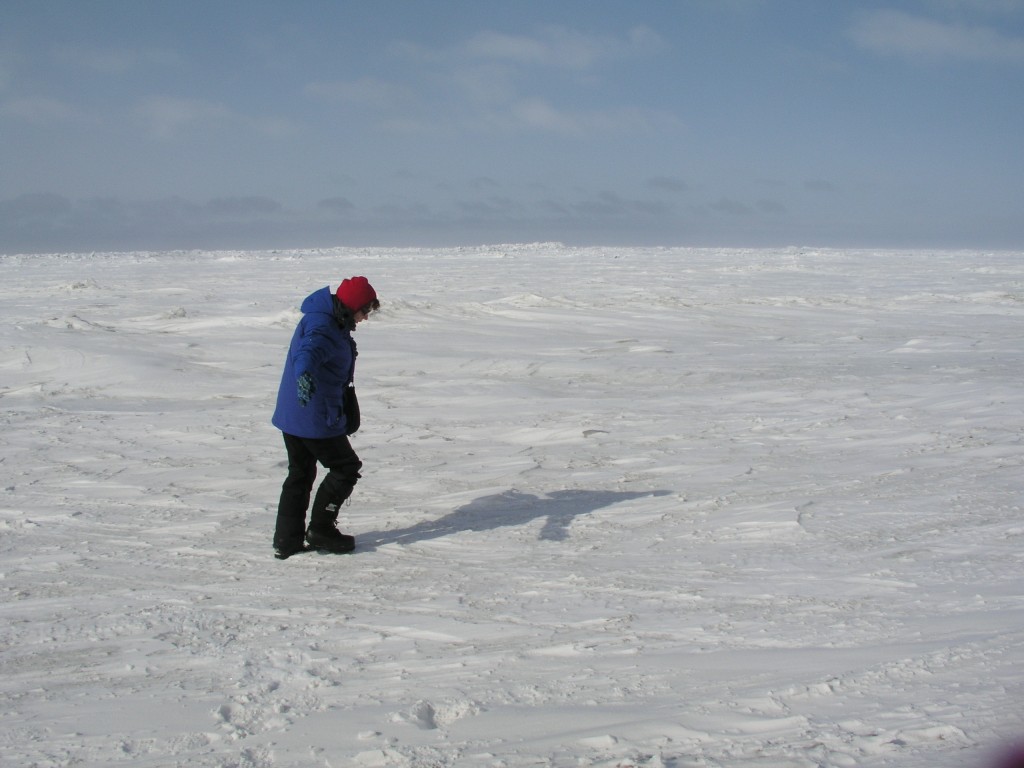
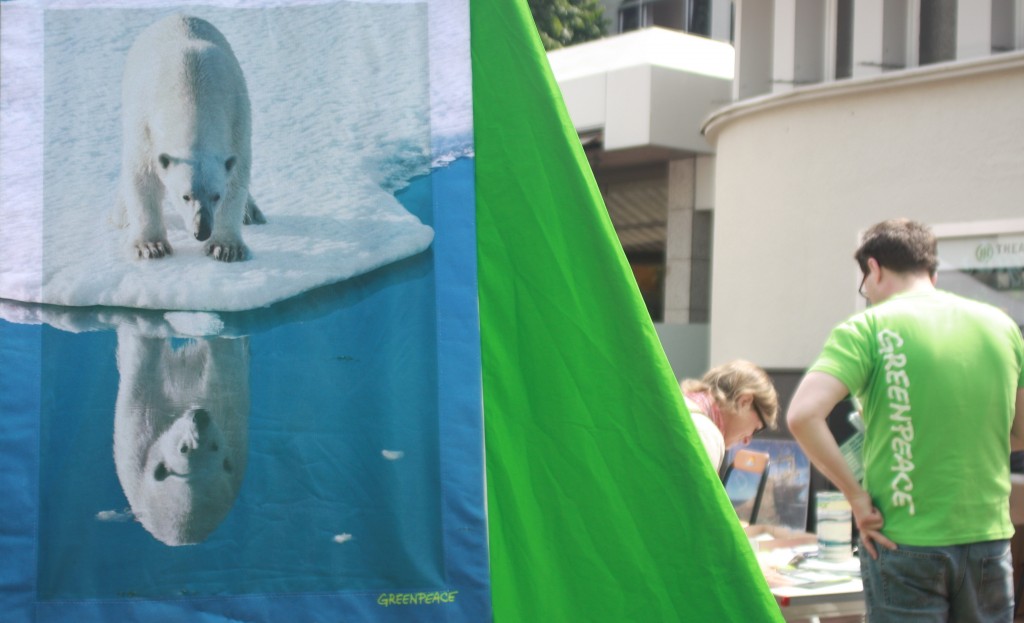
















Feedback